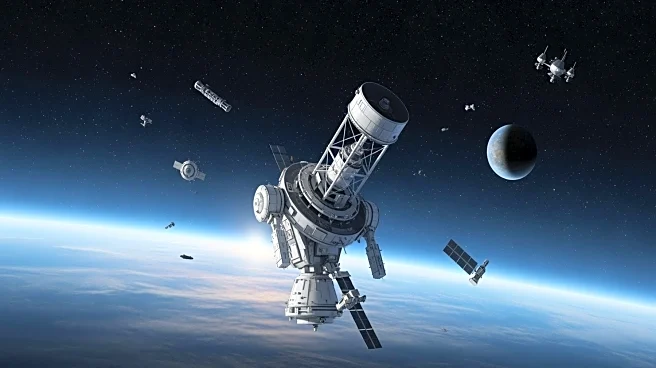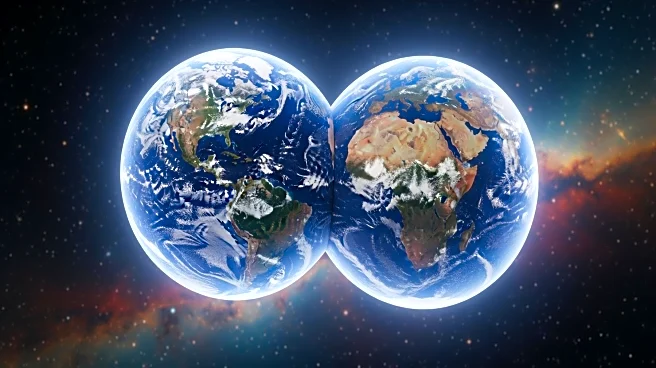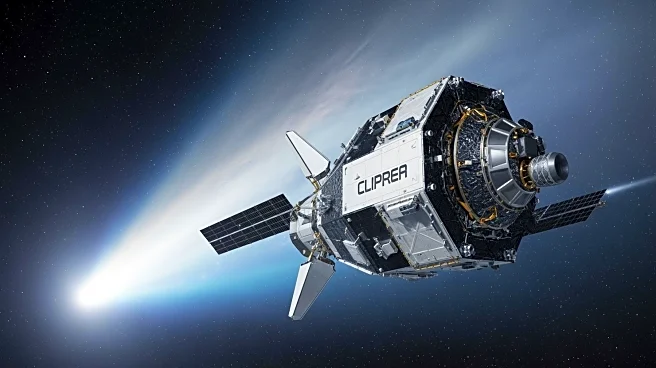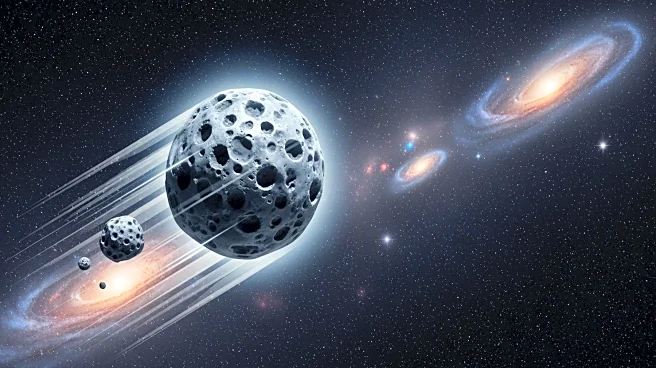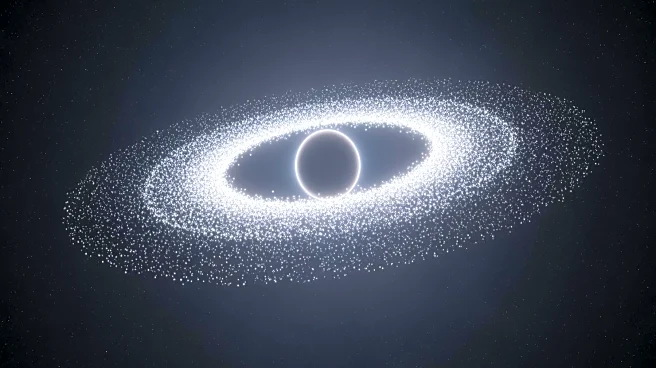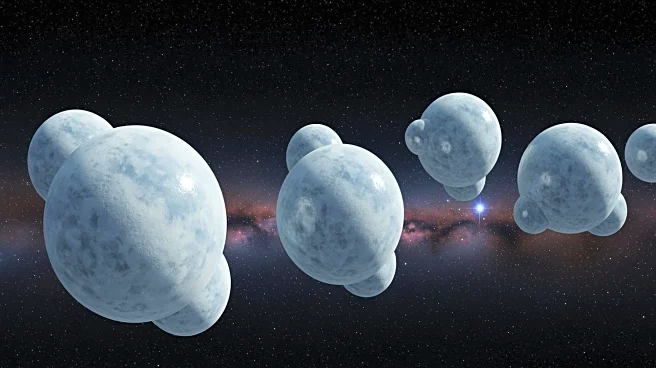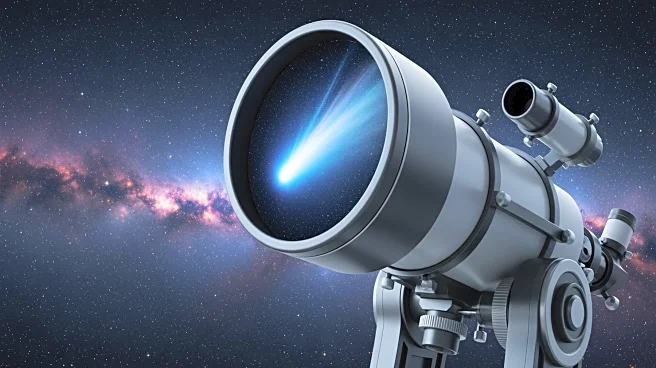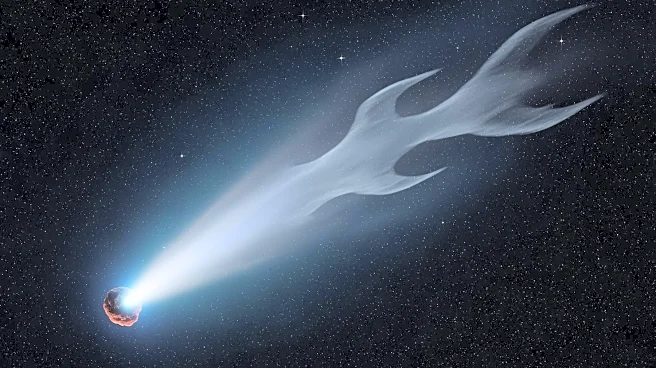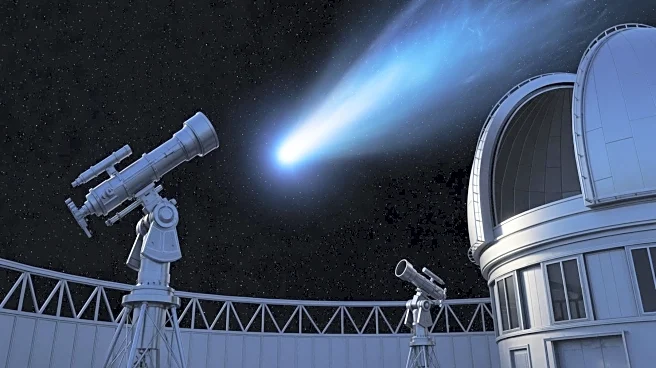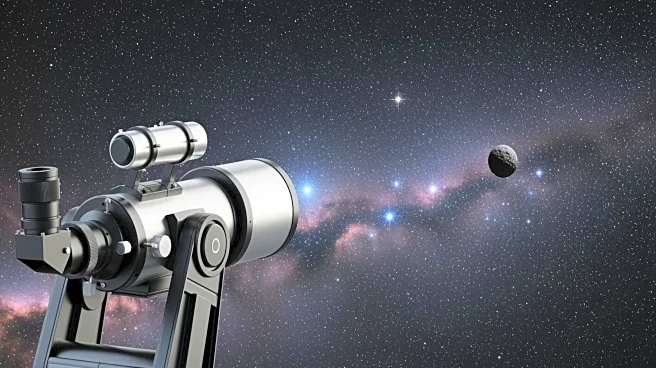What's Happening?
NASA's James Webb Space Telescope (JWST) and other notable spacecraft are currently positioned in the night sky, continuing their scientific missions. The JWST, launched in December 2021, is stationed
at Lagrange Point 2, where it observes deep space phenomena, including ancient light from the early universe and star formation. The Parker Solar Probe, which became the first spacecraft to 'touch' the sun in April 2021, is studying the sun's corona and solar wind dynamics. The Juno spacecraft, orbiting Jupiter since 2016, is gathering data on the gas giant and its moons. New Horizons, which visited Pluto in 2015, is now collecting heliophysics data en route to interstellar space. Voyager 1, the most distant human-made object, entered interstellar space in 2012 and continues to send back data from beyond the heliosphere.
Why It's Important?
These missions are crucial for advancing our understanding of the universe and our solar system. The JWST's observations could lead to breakthroughs in cosmology and astrophysics, potentially reshaping theories about the universe's formation. The Parker Solar Probe's insights into solar wind dynamics are vital for understanding space weather, which can affect satellite operations and communications on Earth. Juno's data on Jupiter could provide clues about the planet's formation and its influence on the solar system. New Horizons' journey towards interstellar space offers a unique opportunity to study the boundary regions of our solar system. Voyager 1's continued operation provides invaluable data on cosmic rays and the interstellar medium, contributing to our knowledge of space beyond the solar system.
What's Next?
The spacecraft will continue their respective missions, with JWST expected to make more discoveries about the universe's early stages. The Parker Solar Probe will conduct additional close passes of the sun, enhancing our understanding of solar phenomena. Juno's mission may be extended further, depending on funding and technical feasibility, to continue studying Jupiter. New Horizons will keep gathering data as it approaches interstellar space, with potential new targets in the Kuiper Belt. Voyager 1 will persist in its journey through interstellar space, providing data that could inform future missions beyond the solar system.
Beyond the Headlines
These missions highlight the collaborative efforts in space exploration, involving multiple international agencies and scientific communities. The ethical considerations of space exploration, such as the potential impact on extraterrestrial environments, continue to be a topic of discussion. The long-term implications of these missions include inspiring future generations of scientists and engineers, fostering international cooperation, and potentially leading to new technologies derived from space research.
